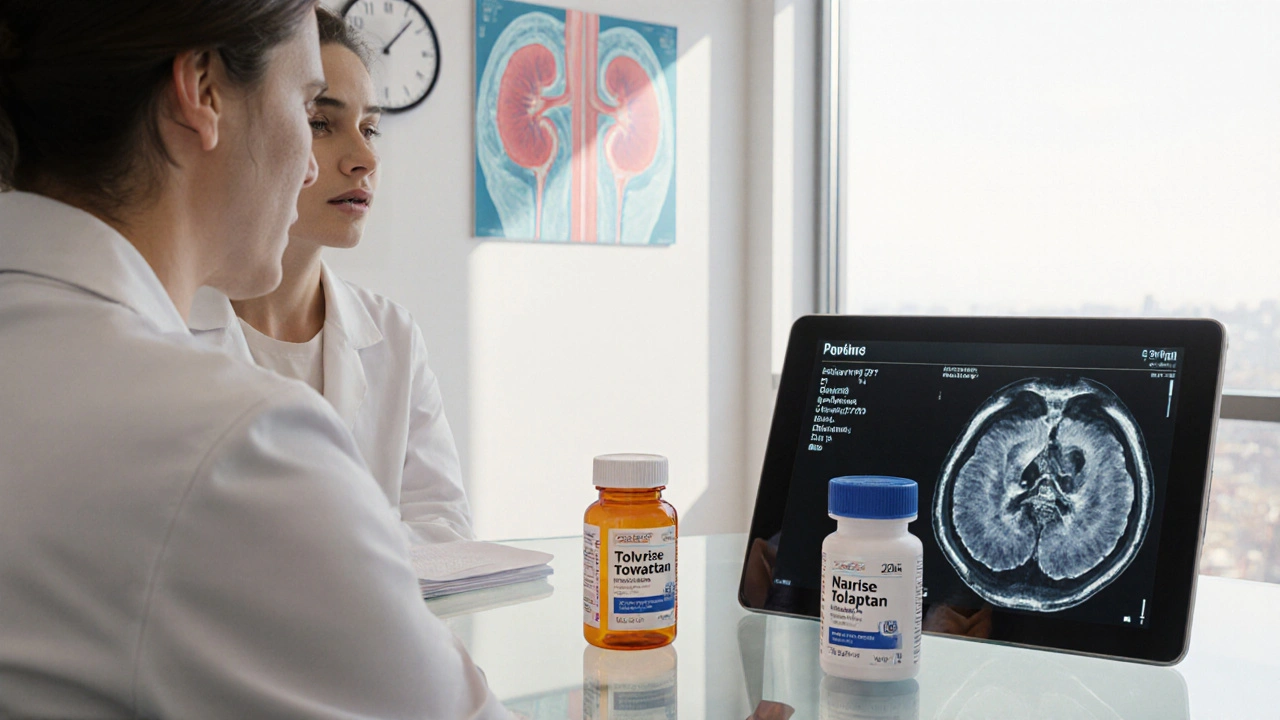ADPKD – Autosomal Dominant Polycystic Kidney Disease Overview
When dealing with ADPKD, an inherited disorder that triggers fluid‑filled cysts to develop in the Kidneys. Also known as autosomal dominant polycystic kidney disease, it can dramatically enlarge the kidneys and impair function over decades. ADPKD encompasses cyst formation, progressive loss of renal tissue, and a high chance of hypertension. Managing Hypertension is a cornerstone because high blood pressure accelerates kidney damage. Early Genetic testing reveals mutations in PKD1 or PKD2 genes, enabling families to plan treatment and monitoring before symptoms appear.
Key Aspects of Living with ADPKD
The disease doesn’t stop at cysts. Patients often face urinary tract infections, kidney stones, and, in advanced stages, chronic kidney disease that may require dialysis or a transplant. Lifestyle tweaks—like staying well‑hydrated, limiting salt, and maintaining a healthy weight—help control blood pressure and slow cyst growth. Foods rich in antioxidants and regular aerobic exercise are practical tools you can start today. If hypertension is already present, doctors typically prescribe ACE inhibitors or ARBs because they protect kidney vessels while lowering pressure. Monitoring kidney size with imaging every 1‑2 years tracks progression, and emerging therapies aim to block cellular pathways that fuel cyst expansion.
Another practical angle is family planning. Since ADPKD follows an autosomal dominant inheritance pattern, each child has a 50 % chance of inheriting the condition. Prenatal ultrasound can detect enlarged kidneys in the third trimester, but definitive diagnosis still relies on genetic testing. Counselors can explain options like pre‑implantation genetic diagnosis for couples who want to avoid passing the mutation. For those already diagnosed, a clear follow‑up schedule—blood work, blood pressure checks, and periodic scans—keeps the care team ahead of complications.
While the prospect of kidney failure can feel unsettling, transplant outcomes have improved dramatically. A living donor kidney often lasts longer than a deceased‑donor organ, and many patients return to normal activities within months. Until transplant becomes necessary, nephrologists focus on slowing the decline with the same blood‑pressure strategies, dietary adjustments, and, in selected cases, newer drugs that target the cyst‑forming pathways. Staying informed about clinical trials can also open doors to cutting‑edge treatments that aren’t yet widely available.
Below you’ll find a curated collection of articles that dive deeper into medication options, lifestyle recommendations, and the latest research breakthroughs for ADPKD. Whether you’re just learning about the condition or looking for advanced management tips, the posts ahead provide practical, up‑to‑date guidance you can act on right now.

